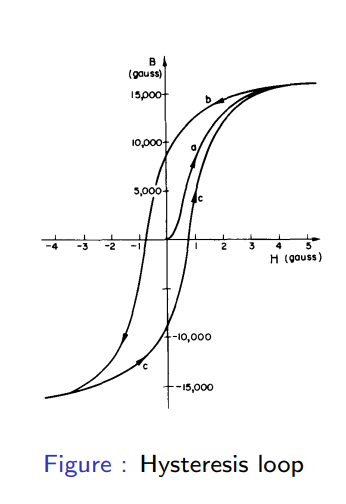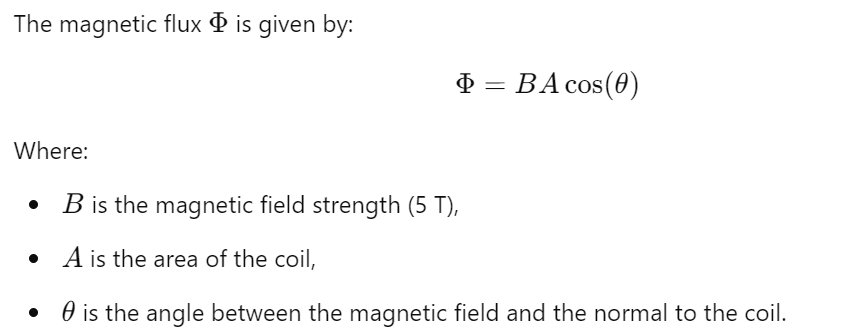Magnetic Materials LEC 4
1/22
Earn XP
Description and Tags
Recap the fundamental principles of magnetic fields within a vacuum (learnt from First Years Physics for Biomedical Engineers course) Understand qualitatively the (atomic) origin of magnetism within materials themselves, and the different types of magnetic materials Qualitatively and quantitatively understand how magnetic materials alter external magnetic fields, in terms of modifying fundamental laws of electromagnetism such as Ampere's Law. Gain knowledge of the important applications of magnetism in different areas of biomedical engineering, and how different magnetic materials are suitable for different purposes.
Name | Mastery | Learn | Test | Matching | Spaced |
|---|
No study sessions yet.
23 Terms

for amperes law, when intergrating for B over dl , when we have a straight current-carrying wire , why is our circular path always 2πr
Since the magnetic field around the wire is circular, we can choose a circular path with radius r around the wire to perform the line integral.
Symmetry: The magnetic field has the same magnitude B at every point on this circular path.
The reason we don't multiply by the length of the wire when applying Ampère's Law to a long, straight current-carrying wire is because of the symmetry of the problem and the fact that the magnetic field is the same at every point on the circular path.
What is MRI?
Magnetic Resonance Imaging (MRI) uses magnetic moments of protons in materials. A magnetic field aligns protons, and a radio frequency field "knocks" them, causing them to relax and emit signals. These signals provide detailed imaging.
How are magnetic fields used in MRI?
A steady magnetic field aligns protons. A transverse radio frequency field is used to "knock" the protons, and as they relax back to their original state, they emit signals, which are detected to create images.
explain Magnetic Particles in Biomedical Applications
Magnetic particles with biocompatible coatings are used in vivo for applications like magnetic separation (cells, bacteria, enzymes, DNA) and drug delivery (targeted therapy using a magnetic field).
How does magnetic separation work?
Magnetic particles are attached to target entities (cells, bacteria), and a magnetic field is used to separate the target by attracting the magnetic particles, isolating the specific targets from the surrounding medium.
explain Magnetic Drug Delivery
Drugs are coated with magnetic particles and directed to specific locations using a magnetic field gradient, minimizing side effects and enhancing drug delivery efficiency.
explain Magnetic Hyperthermia
Magnetic particles are heated using an alternating magnetic field, causing localized temperature rise (~43°C) to selectively destroy cancer cells through hysteresis losses in ferromagnetic materials.
What are Contrast Agents in MRI?
Contrast agents like paramagnetic gadolinium (Gd) alter proton relaxation times in MRI, enhancing image contrast when delivered to specific regions, like a tumor or injured tissue.
What is the role of quantum mechanics in Diamagnetism?
Quantum mechanics stabilizes the induced currents, allowing them to persist when the external magnetic field is constant, leading to a sustained magnetization in the material.
What happens to the magnetic moments in the absence of an applied magnetic field?
In the absence of an external magnetic field, the magnetic moments are randomly aligned, and their average moment is zero. Therefore, the material does not have any net magnetization.
How do magnetic moments behave when placed in an external magnetic field?
When exposed to a magnetic field, the magnetic moments align with the field. The direction of the current loops of the moments adds to the externally applied magnetic field.
What is the effect of the applied magnetic field on the material's magnetization?
The external magnetic field causes the magnetic moments to align in the same direction, creating a net magnetization in the material. This results in the material being weakly attracted to the magnetic field.
What happens to B as the current increases in a material like soft iron in an electromagnet?
As the current increases, B increases rapidly with H, until it reaches saturation when all domains are aligned. After saturation, B increases linearly with H as M becomes constant.
What is remanence in the context of a B-H curve?
Remanence is the magnetic field that remains in the material after the applied field is reduced to zero. It occurs because some of the magnetic domains remain permanently aligned.
What happens when the current is reversed in a B-H curve?
Reversing the current causes B to decrease, and eventually reach zero at a large negative applied field. Then, the material reaches saturation in the reverse direction.
What is a hysteresis loop?
A hysteresis loop represents the relationship between B and H as the magnetic field is cycled. The major hysteresis loop involves taking the material to saturation and back, leaving a large remanence. Minor loops don't reach saturation and leave a lower remanence.
What factors affect the value of BBB at H=0H = 0H=0?
The value of B at H=0 depends on:
Whether the curve is major or minor.
The direction in which the curve is being traversed.
what does a BH curve look like

explain relationship between a solenoid and magnetic field
the magnetic field inside is assumed to be uniform and parallel to its axis, and nearly zero outside. We take an Ampèrian loop that matches this geometry:
Inside the solenoid:
The magnetic field, B⃗, runs parallel to the axis of the solenoid.
The contribution to the line integral comes only from the length L of the Ampèrian loop that lies inside the solenoid.
Outside the solenoid:
The magnetic field is negligible.
The contribution to the line integral from the loop's exterior segment is approximately zero.
for what elements is magnetic field circular
Wire or toroid: The magnetic field is circular. A circular Ampèrian loop is suitable.
what does azimuthal direction mean
the direction along the angle of rotation around a central axis in a cylindrical or spherical coordinate system
what are the differences between a solenoid and a toroid
Solenoid: The current enclosed depends on the number of turns per unit length and the length of the Ampèrean path because the number of turns grows linearly with the path length.
Toroidal Core: The current enclosed is simply the total current through the fixed number of turns that thread the Ampèrean loop, irrespective of the path length.
what is another expression for flux when the magnetic field is uniform (the same in magnitude and direction everywhere) and the surface is flat and perpendicular to the magnetic field?
